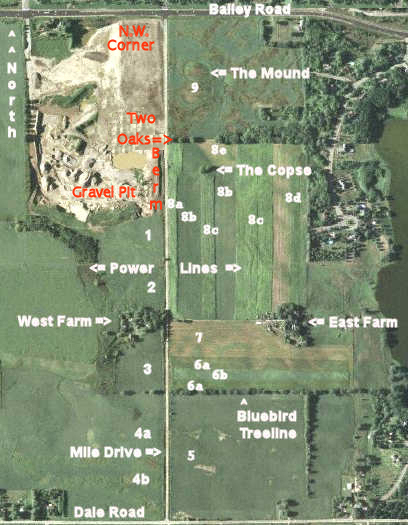
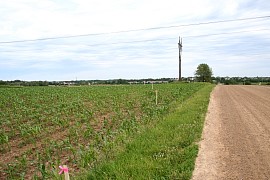 Here is evidence of future changes in the landscape to come - these stakes in field #2 show
the route of a future paved
road that will come down past the west side of the gravel pit and turn southeast and hit
Mile Drive (see large arrows in picture left). Perhaps the north end of Mile Drive will be cut
off from Bailey Road. Woodbury will get a new high school across just west of the gravel pit.
Here is evidence of future changes in the landscape to come - these stakes in field #2 show
the route of a future paved
road that will come down past the west side of the gravel pit and turn southeast and hit
Mile Drive (see large arrows in picture left). Perhaps the north end of Mile Drive will be cut
off from Bailey Road. Woodbury will get a new high school across just west of the gravel pit.
|
|
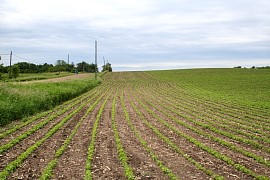
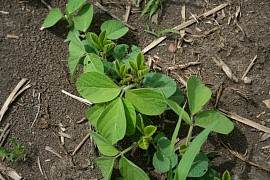
Soybeans grow in gracefully rows. After the single leaves develop all subsequent leaves are
trifoliolates comprised of 3 leaflets.
|
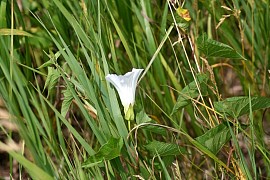
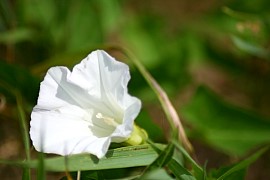
These large white flowers are from hedge bindweed (Convolvulus sepium). Its also known
as wild morning-glory. It's a perennial native to North America. The picture on the right is
not as focused as I would have liked it to be when you enlarge the picture. I needed to have
changed the white balance of the camera before taking the shot. Live and learn.
Return to Flora
|
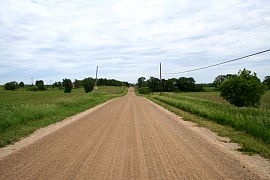
Walking north on the road south of the farms.
|
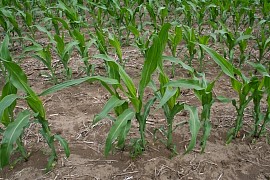
The corn is growing nicely - note the variability in the individual plants.
Corn is a plant native to North and South America. Most of the corn grown in the United States since the early nineteenth century has been used to feed animals.
The Corn Belt includes the states of Michigan, Minnesota, South Dakota, Wisconsin, Ohio, Illinois, Indiana, Iowa, Missouri, Kansas, and Nebraska. The United States is the leading corn grower and grows more than 35% of the world's corn.
|
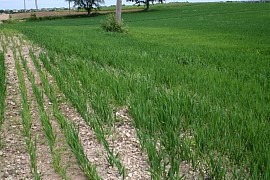
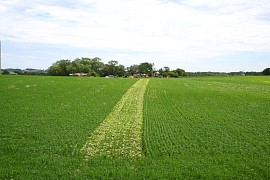 In field #7 the elderly farmer has planted oats. Oats are the third most important grain crop in the United
States.
Most oats are used for livestock feed - that's what this is. The oat plant, like wheat, is an annual grass with kinds and varieties
adapted either to fall planting and midsummer harvest or spring planting and late summer harvest. In
general, over wintering kinds are grown where winter climates are mild - as throughout the Cotton
Belt and in the western portions of the Pacific States. Spring seeding is generally practiced here
in Minnesota. When I asked the elderly farmer about the funny stripe he told me his hydraulics
failed and the seeds got planted too deep. Consequently, weeds got the jump on the oats.
In field #7 the elderly farmer has planted oats. Oats are the third most important grain crop in the United
States.
Most oats are used for livestock feed - that's what this is. The oat plant, like wheat, is an annual grass with kinds and varieties
adapted either to fall planting and midsummer harvest or spring planting and late summer harvest. In
general, over wintering kinds are grown where winter climates are mild - as throughout the Cotton
Belt and in the western portions of the Pacific States. Spring seeding is generally practiced here
in Minnesota. When I asked the elderly farmer about the funny stripe he told me his hydraulics
failed and the seeds got planted too deep. Consequently, weeds got the jump on the oats.
|
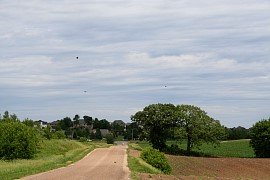
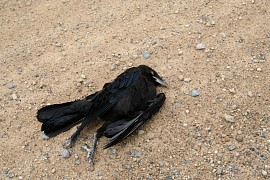
You can see this murder of crows is agitated. Here is one of their buddies dead on the road.
Crows carry diseases like West Nile virus. Consequently, I wouldn't handle a dead one.
Return to Birds
|
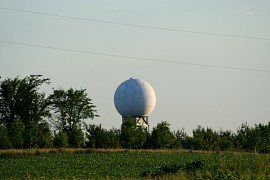
Across Dale Road is this large round object.
The Minneapolis/St. Paul International Airport is located 15 miles away and here is one of the
airports Dopplar radars. Planes in the airport holding pattern seem to loop
around this radar, which would explain the large number of airliners I see on my walks.
|
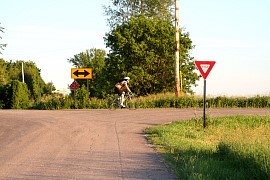
Here is my photographic attempt at motion - not too bad. This guy was on Dale Road heading west.
|

Sunlight caught in the clouds as sunset looms.
|
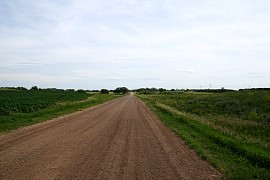
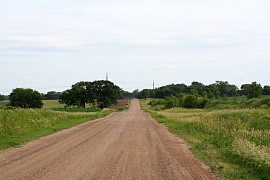
Two shots looking down the road toward the south. Note the ditch on the right side of the road -
very soon teraforming by the gravel company will totally obliterate the short trees, flowers,
blackberry bushes, etc. found on this side of the road. When I took these pictures I never thought
the destruction of the landscape would begin so soon.
|
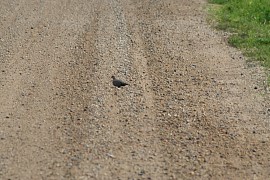
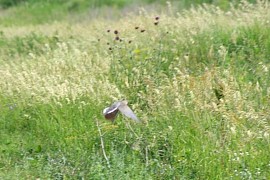
Mourning Dove (Zenaida macroura)
A Mourning Dove pair rarely leaves its eggs unattended. The male usually incubates
from midmorning until late afternoon, and the female sits the rest of the day and night.
A dove may have up to five or six clutches in a single year.
The Mourning Dove is the most widespread and abundant game bird in North America.
Despite being hunted throughout most of its range, it remains among the 10 most
abundant birds in the United States.
Return to Birds
|

This is Bluebird Tree Line. I was attracted by the streaked cloud cover.
|
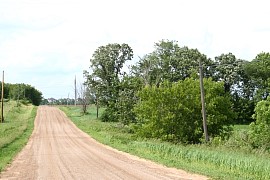
The oak leaves are still not fully out.
|
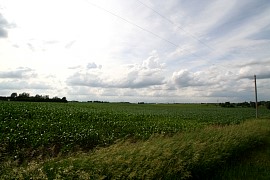
More cloud cover over field #4.
|
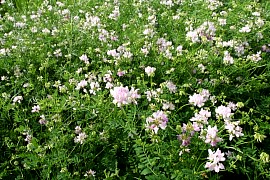
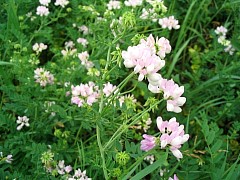
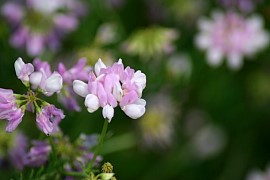 Crown vetch (Coronilla varia) is a hardy perennial legume. Crown vetch is native to central and
southern Europe. It is not a true vetch, although it resembles common and hairy vetch. Crown vetch
spreads
from rhizomes and will form a dense cover. It has been used for soil stabilization
and as an ornamental for many years.
Return to Flora
Crown vetch (Coronilla varia) is a hardy perennial legume. Crown vetch is native to central and
southern Europe. It is not a true vetch, although it resembles common and hairy vetch. Crown vetch
spreads
from rhizomes and will form a dense cover. It has been used for soil stabilization
and as an ornamental for many years.
Return to Flora
|